Sleep Meditation: Simple Guide for Better Rest in 2025 + Free Printable
If your mind feels like it’s running a marathon the moment your head hits the pillow, you’re not alone. Sleep meditation can be the gentle nudge your brain needs to slow down, relax, and finally let go of the day. Keep reading to discover how it works, why it’s so effective, and how to use a free printable to make it part of your nightly sleep routine.
I may earn a small commission for affiliate links in this post at no extra cost to you. Please read my privacy policy and privacy page for more information. As an Amazon Associate, I earn from qualifying purchases.
Sleep meditation works because it gently guides your mind and body out of the busy “daytime mode” and into a peaceful state where rest feels natural.
By focusing on your breath, calming your thoughts, and relaxing your muscles, you create the perfect conditions for drifting off with ease, without tossing, turning, or stressing about the clock.
As someone who spent years managing a mattress store, I’ve always been all about helping people sleep better in every way possible—not just with the right mattress, but with habits and tools that truly make a difference.
That’s why I created this sleep meditation guide and free printable for you.
It’s a simple, soothing routine you can follow each night to help you feel calm, centered, and ready for deep, restorative sleep.
Ready to learn more? Great, fluff up your pillows, snuggle under some blankets, get comfy, and let’s get into it!
How Sleep Meditation Works
When you practice sleep meditation, your mind and body move into a peaceful state where stress melts away and your senses start to rest.
At its core, sleep meditation helps quiet racing thoughts and signals your body that it’s time to unwind.
Breathing slows, muscles relax, and your brain gets a clear cue to shift toward sleep.
You’re not forcing anything—instead, you’re guiding yourself gently from wakefulness to rest, much like stepping into a warm bath at the end of a busy day.
Whether you use simple breathing practices or listen to a soothing voice, the techniques you choose all target this same goal: inviting calm and setting the perfect scene for sleep.
Key Elements of Sleep Meditation Techniques
There isn’t a one-size-fits-all method.
You’ll find a handful of popular techniques for sleep meditation, each with its own focus.
Let’s break down a few of the most common approaches, so you can find what works best for you.
- Mindfulness: Mindfulness brings you into the present moment. By paying close attention to sensations, sounds, or your breath, you learn to notice thoughts without following them down a spiral. The goal is to simply observe, letting stressful ideas pass by like leaves floating on a stream.
- Body Scans: Picture lying in bed and slowly tuning into each part of your body. You bring awareness to your toes, legs, belly, arms, and head, noticing how each area feels. Many people discover tension they didn’t even know was lingering. By scanning and relaxing each muscle group one by one, you help your body release tightness and prepare for rest.
- Guided Visualization: This technique uses your imagination to encourage deep relaxation. A calming voice might prompt you to picture yourself on a quiet beach, in a peaceful garden, or floating on a cloud. The detailed imagery taps into your senses, replacing stressful thoughts with something soothing. Over time, your mind learns to connect these images with sleep.
- Deep Breathing: Deep, slow breathing is simple but powerful. People often use specific rhythms, like the 4-7-8 technique (inhale for 4 counts, hold for 7, exhale for 8), to anchor attention and guide the body toward sleep.
All these methods have one thing in common—they calm the nervous system.
As you practice, your brain starts making new connections.
Instead of associating bedtime with worry or tension, you train your body to expect rest.
Over time, your mind follows this path more easily, so you fall asleep faster and wake up feeling truly refreshed.
Benefits of Practicing Sleep Meditation
Sleep meditation does much more than simply help you drift off.
Consistent practice can transform the quality of your sleep, ease stress, and bring more balance to your days.
When you give your mind and body space to unwind, you open the door to healthier nights and brighter mornings.
Here’s what you can expect when you make sleep meditation part of your nightly rhythm.
Improved Sleep Quality and Duration
Falling asleep isn’t always as simple as turning off the lights.
You might find yourself lying awake, your mind running through to-do lists or replaying the day.
Sleep meditation can help change this pattern by guiding your brain into a more relaxed state.
When you use deep breathing or body scans, for example, you send calming signals to your nervous system.
This helps you fall asleep faster, reducing sleep latency—the time it takes to move from wakefulness to sleep.
Better quality sleep doesn’t just mean more hours in bed.
It’s about spending more time in the deep, restorative stages your body needs.
Regular meditation can potentially help you stay asleep longer and wake up less during the night.
Over time, you will hopefully notice you don’t need to fight for rest—your brain learns to settle down with less effort.
Key ways sleep meditation can help improve your nights:
- Shortens the time it takes to fall asleep
- Increases time spent in deep, restful sleep
- Reduces nighttime awakenings and tossing
- Creates a soothing bedtime ritual that your body recognizes
You should be able to wake up refreshed, not groggy, and ready to take on your day.
Reduction in Stress and Anxiety
Bringing meditation into your bedtime routine can feel like giving your brain a gentle sigh of relief.
As you wind down, you often carry worries and stress from the day.
This can set off a stress response that keeps your body on high alert, making it much harder to relax.
Sleep meditation counters this by quieting the body’s stress signals and slowing your racing thoughts.
Practices like guided imagery and deep breathing shift your focus away from anxious thinking.
Enhanced Overall Well-being
The benefits of sleep meditation can quite possibly reach far beyond bedtime.
When you sleep better and stress less, your whole outlook starts to shift.
Good sleep and steady nerves set you up for clearer thinking, brighter moods, and greater resilience when life gets busy.
Regular sleep meditation practice supports:
- Improved mood: You’ll likely notice fewer morning blues and a more positive outlook.
- Better cognitive function: A well-rested brain helps you remember things, focus, and solve problems with less effort.
- Stronger emotional balance: It gets easier to handle daily frustrations or setbacks without feeling overwhelmed.
- More energy: Quality sleep gives you natural energy, so you don’t have to rely on caffeine or crash mid-afternoon.
Treating your nighttime routine as a priority isn’t just self-care—it’s a way to restore your body and mind, making every part of your day easier to handle.
With meditation, you’re giving yourself the best shot at deep rest and a better tomorrow.
How to Practice Sleep Meditation Effectively
Once you understand the benefits of sleep meditation, the next step is practicing it so it actually helps you fall asleep.
Setting up your space, creating a dependable routine, and knowing what to do when your mind just won’t settle are all important.
With a few simple changes, you can turn bedtime into a relaxing ritual that signals your body and mind to slow down.
Preparing Your Space for Sleep Meditation
Where you meditate affects how well you ease into sleep.
Your bedroom should feel like a sanctuary, not an office or a place where you check your phone.
Here are some practical tips for creating a calming environment:
- Dim the lights well before bedtime. This signals your body that it’s time to wind down. Use soft lamps for a cozy feel.
- Lower the room temperature. Most people sleep best in a slightly cool room, between 60-67°F.
- Limit noise. If outside sounds bother you, try white noise or gentle nature sounds. Earplugs work too if you live in a noisy area.
- Make your bed inviting. Fresh sheets, a comfortable pillow, and a light blanket can make a difference.
- Put away screens. TV, phones, and tablets stimulate your brain. Aim to shut them off at least 30 minutes before your meditation.
- Add personal touches. Soft scents like lavender, blackout curtains, or a favorite sleep mask can help your brain associate your space with rest.
A calm, clutter-free sleep space cues your body for relaxation.
You want your brain to associate the bedroom with sleep, not work or stress.
Step-by-Step Sleep Meditation Process
Building a repeatable meditation routine doesn’t have to be complicated.
Consistency is more important than perfection.
Here’s a simple process you can use every night:
- Set your intention. Before you even get into bed, tell yourself that you’re giving this time to rest, not problem-solving or planning the next day. A single deep breath can help you shift gears.
- Get comfortable. Lie on your back or side, letting your arms rest easily. Close your eyes and feel your body supported by the mattress.
- Start with your breath. Focus on slow, steady breaths. Try breathing in for a count of four, holding for a few seconds, then exhaling for a count of six to eight. Repeat this rhythm five to ten times.
- Use a body scan (if your mind is racing). Begin at your toes and slowly notice each part of your body. With every exhale, relax a different area—feet, legs, hips, stomach, arms, shoulders, neck, face. Move upward until your whole body feels heavy and still.
- Bring in a simple visualization or mantra. Picture a calming scene or repeat a quiet phrase like “I am safe” or “I am relaxed.” If you prefer, listen to a guided meditation using an app or audio track. Let the voice or music ease you toward sleep.
- Notice and redirect thoughts. If your thoughts wander, that’s normal. Gently shift your attention back to your breath or the sound you’re using. Avoid getting frustrated with yourself.
- Let go of the process. As you settle, let sleep come naturally. The goal isn’t to force yourself asleep but to create the right conditions for rest to happen.
Practice this routine for 10–20 minutes at first.
Over time, your mind will pick up these cues and start to wind down faster, sometimes even before you finish.
I’ve also included a free printable sleep meditation script below to help guide you at home.
Troubleshooting Common Sleep Meditation Challenges
Even with a good routine, you might run into hurdles.
Racing thoughts, stubborn restlessness, or outside distractions can throw you off.
Here’s how to troubleshoot the most common issues:
- Distractions from noise or light: Try earplugs, an eye mask, or white noise. If your thoughts are triggered by what you hear or see, acknowledge it, then gently guide your attention back to your breath or mantra.
- Racing thoughts: Your mind gets busy when you finally slow down. Use a notepad to jot down lingering worries before you begin. In meditation, don’t fight the thoughts—imagine them as clouds drifting by.
- Body discomfort: Adjust your position until you feel comfortable. If aches or tight spots distract you, add gentle stretching before beginning or use extra pillows for support.
- Trouble staying awake: It’s okay if you fall asleep during meditation, but if you find yourself dozing off too soon, try sitting up at first or keeping a dim light on until the last few minutes.
- Frustration or impatience: Remind yourself this is a skill, not a test. Some nights will go better than others, and that’s okay. Every time you practice, you’re teaching your mind and body to relax a little more.
Here are a few extra tips if you get stuck:
- Don’t judge your experience. Even if your mind is busy, the act of showing up for meditation is helpful.
- Choose guided meditations designed for sleep. These keep you focused and provide extra comfort.
- Try progressive muscle relaxation. Tense, then release every muscle group from your toes up. This can reset physical tension fast.
A little patience and self-compassion go a long way with sleep meditation.
Some nights take more effort, but regular practice will help you drift off more peacefully over time.
Download Your Free Printable Sleep Meditation Guide
Bringing meditation into your evening is easier when you have a simple routine to follow.
That’s why you’ll benefit from having a free printable sleep meditation guide right by your bed.
Using a step-by-step guide can stop you from fumbling with your phone late at night and help you make meditation a smoother habit.
Now you won’t forget key steps when you’re tired, and you’ll have a supportive tool to use anytime you need it.
How to Get Your Printable Sleep Meditation Guide
You can access your free sleep meditation guide quickly.
Follow these steps to make sure it lands in your inbox and is ready for use tonight:
- Click the button below. This opens a simple sign-up form.
- Enter your email address.
- Check your inbox. The free printable PDF will arrive soon.
- Download and save the PDF file. Open the attachment and save it somewhere you can easily find it later.
- Print the guide. Hit print and keep it near your bed, so it’s there whenever you wind down for sleep.
You don’t have to worry about remembering instructions or running through the steps in your head.
With your printable, you can settle into your routine, even when you feel exhausted or overwhelmed.
Why a Printable Sleep Meditation Guide Works
Sometimes sticking to new habits is the hardest part, especially when you’re tired.
A printable guide breaks the routine into manageable pieces and offers gentle reminders right at your fingertips.
You’ll sidestep distractions from phones or screens and turn your attention toward calming your mind and body.
A quick glance at your printable each night will:
- Remind you of each meditation step
- Keep you on track, no matter how busy your day was
- Cut down on decision fatigue by giving you a ready-made plan
- Support long-term sleep improvements
Building new habits takes patience, especially around bedtime.
Your guide makes everything feel a bit easier, more practical, and stress-free.
Final Thoughts
Sleep meditation isn’t just about falling asleep faster—it’s about giving your mind and body the chance to truly rest, recharge, and welcome a new day feeling refreshed.
After years in the mattress industry, I’ve learned that great sleep is more than just a comfortable bed—it’s about the little habits and rituals that prepare you for dreamland.
I’m so excited to share this free printable with you so you can create your own peaceful nighttime routine and enjoy the deep, restorative sleep you deserve.
Ready to start sleeping better? Get your free printable below and make a real change in how you wind down each night. Grab yours, print it out, and let your next sleep be your best yet.
Your Turn
Do you have any sleep meditation tips that have transformed your bedtime? Let me know in the comments!
RELATED POSTS:
- 50 Sleep Well Quotes to Relax and Rest Easy Tonight [Free Printable]
- Night Routine List for Better Sleep [Free Printable + Simple Steps]
- Simple Night Journal Prompts for Peace and Clarity
- Bedtime Habit Tracker: Free Printable for a Better Sleep Routine
- Night Affirmations Before Sleep: Simple Steps for a Calmer Mind [Free Printable Cards]
- How to Build a Sleep Routine That Actually Works
- Free Printable Sleep Tracker to Finally Understand Your Sleeping Habits
- Sleep Hygiene Tips That Work [Free Printable Checklist Included]
- 45 Can’t Sleep Quotes Funny: To Laugh When Sweet Sleep Won’t Come
- Dream Tracker: Free Printable to Turn Your Nightly Dreams into Insights
- Dream Journal: Free Printable to Start Tracking Your Dreams
- Dream Journal Prompts Download: The Easy Way to Start Recording Your Dreams
- Brain Dump Before Bed for Better Sleep: Free Printable and Simple Night Routine
- Brain Dump Prompts for Better Sleep: A Nightly Routine for Quieting an Active Mind
- Top 15 Bedroom Essentials: My Must Have List for Better Sleep
- How to Sleep Faster and Wake Up Energized Every Morning
Hi, I’m Debbie, general manager of a mattress store chain with 25+ years helping people improve their sleep quality. At Sweet Sleep Tips, I share natural, practical sleep solutions, calming bedtime habits, and printable tools to help you fall asleep faster and wake up refreshed. My goal is to make better sleep simple, healthy, and stress-free.
Follow me on Pinterest, Instagram, and Facebook to stay up to date with all the latest Sweet Sleep Tips.

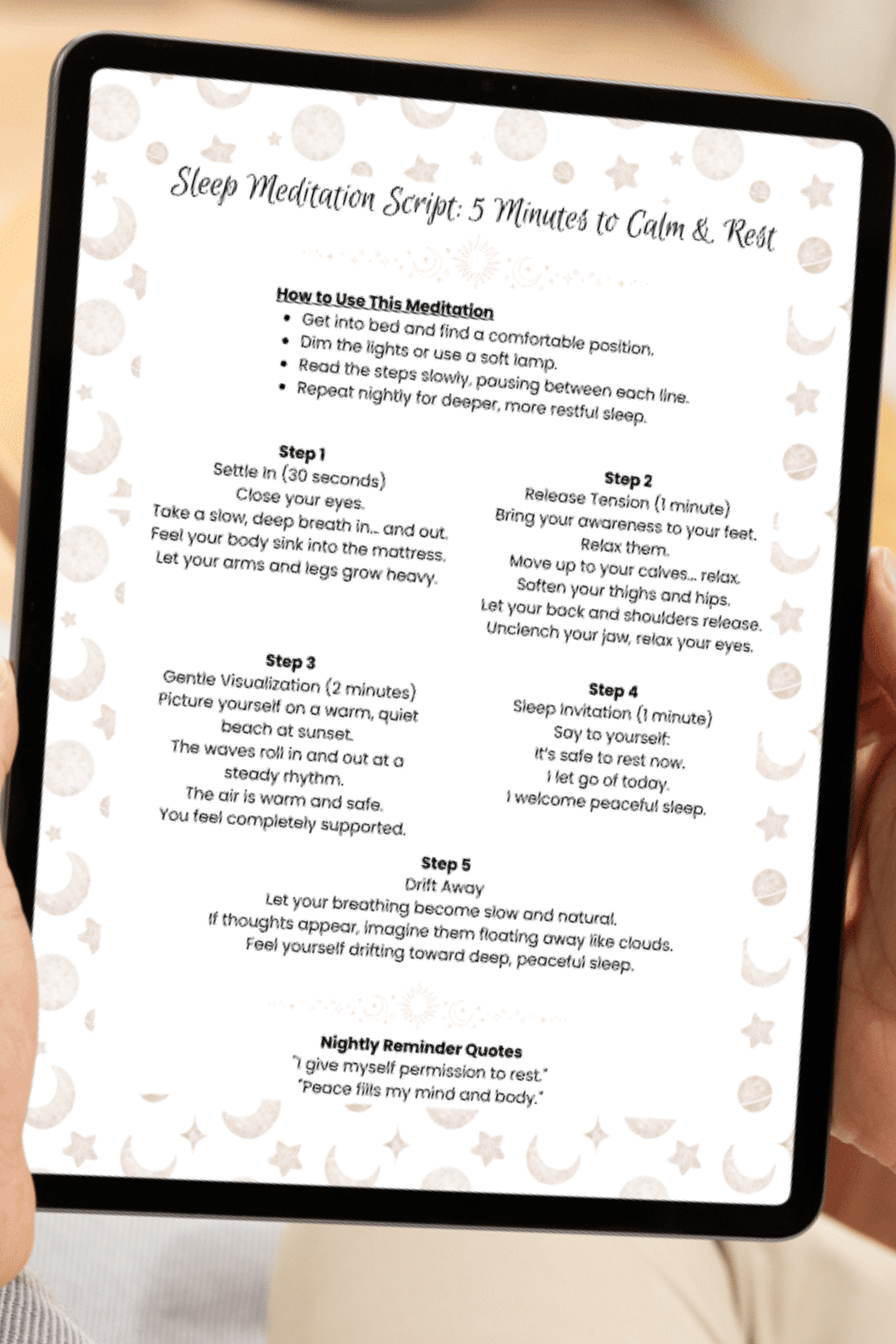


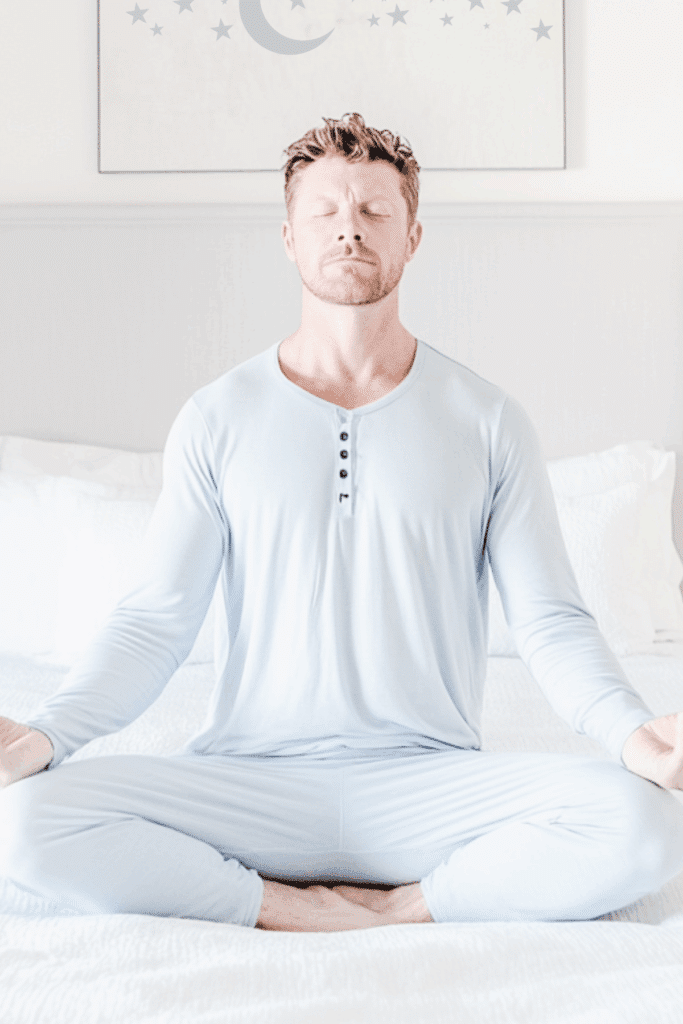
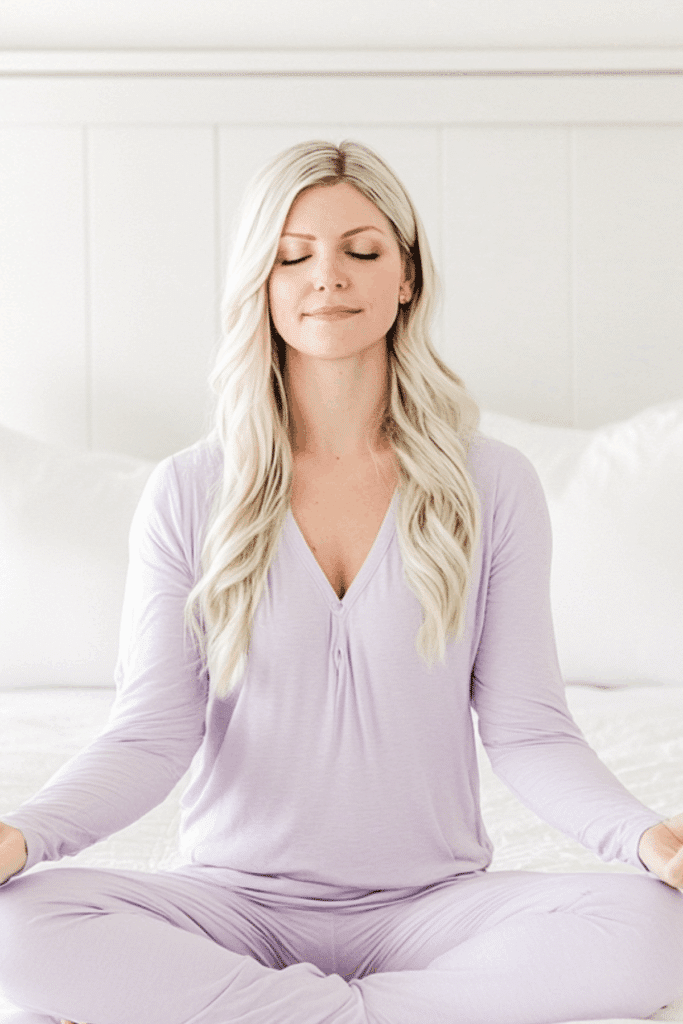





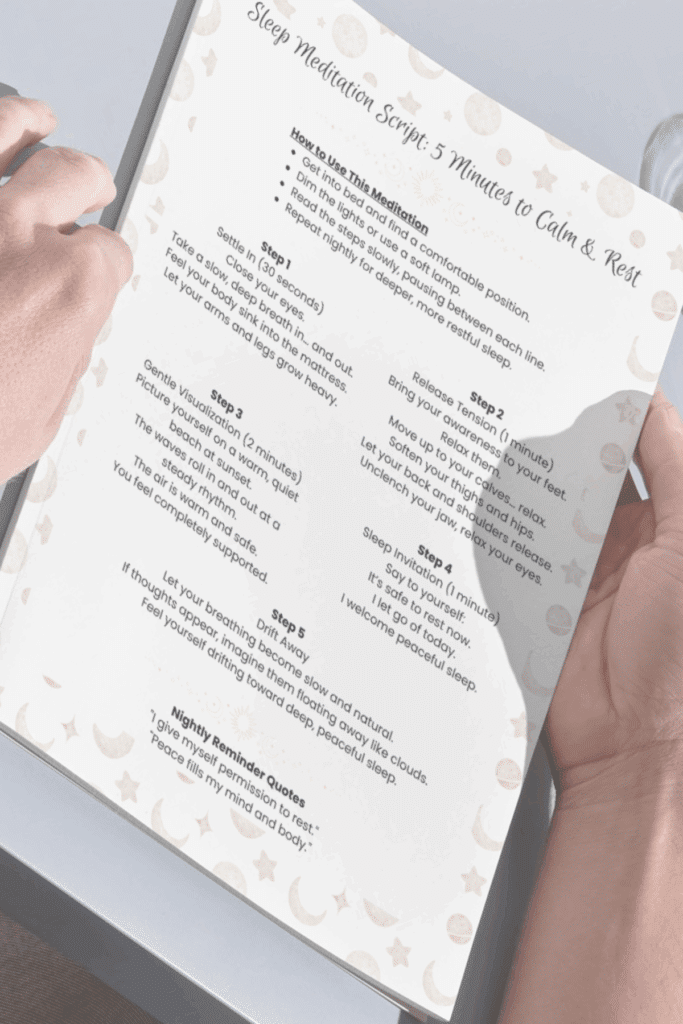
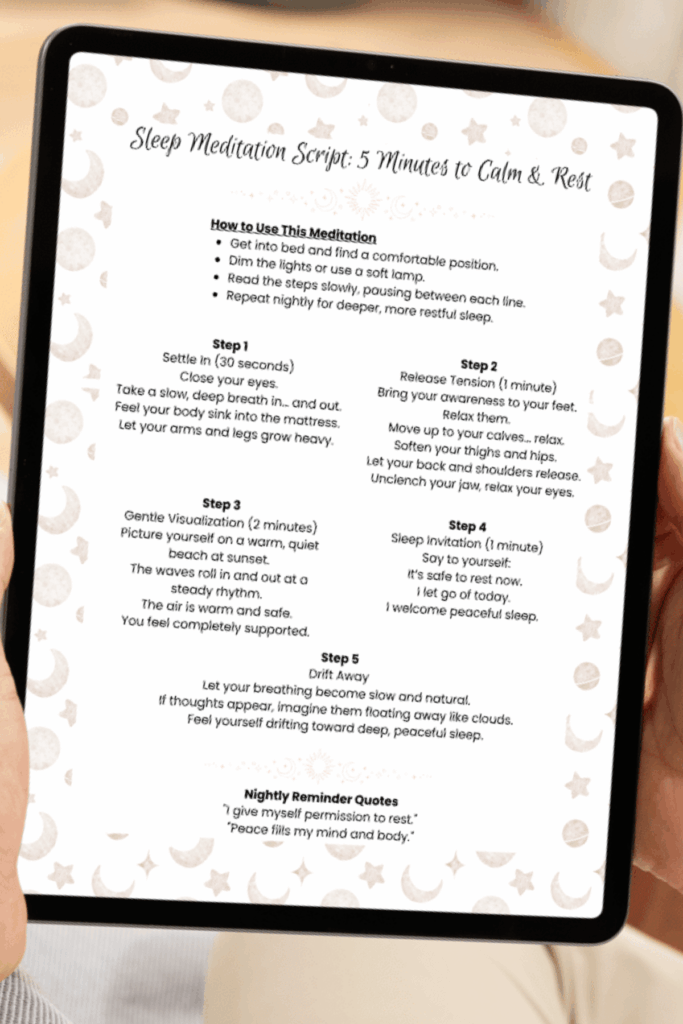


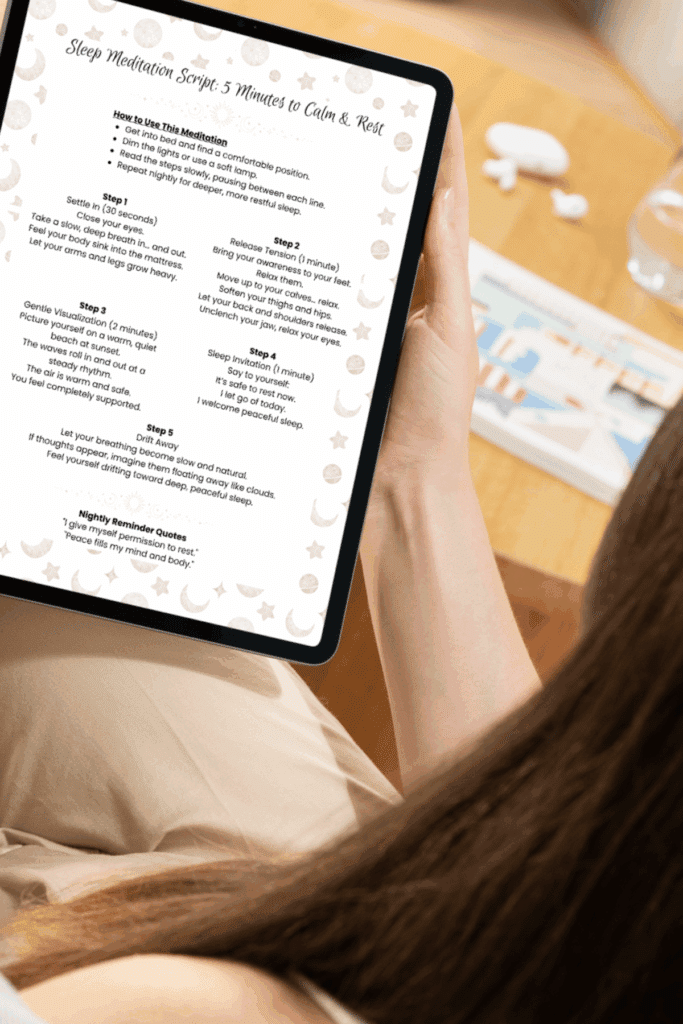



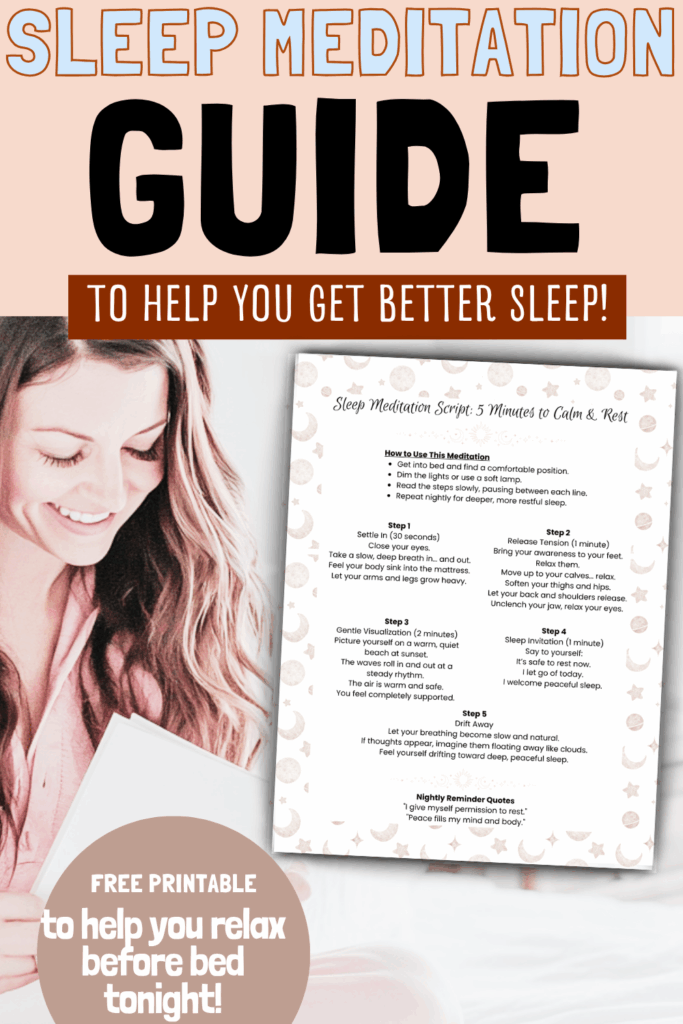

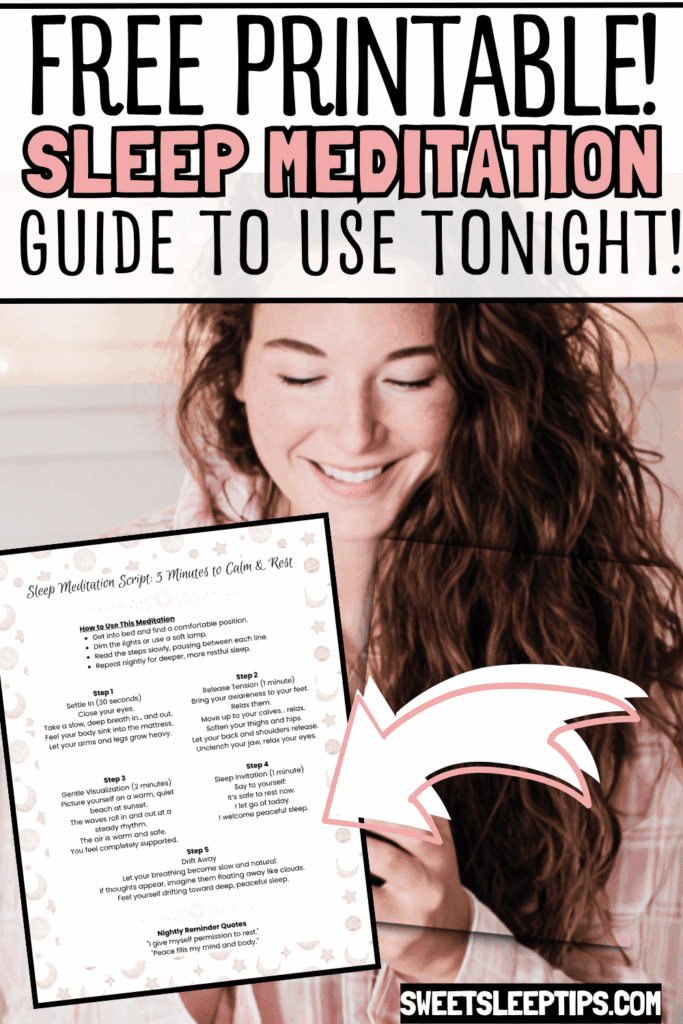

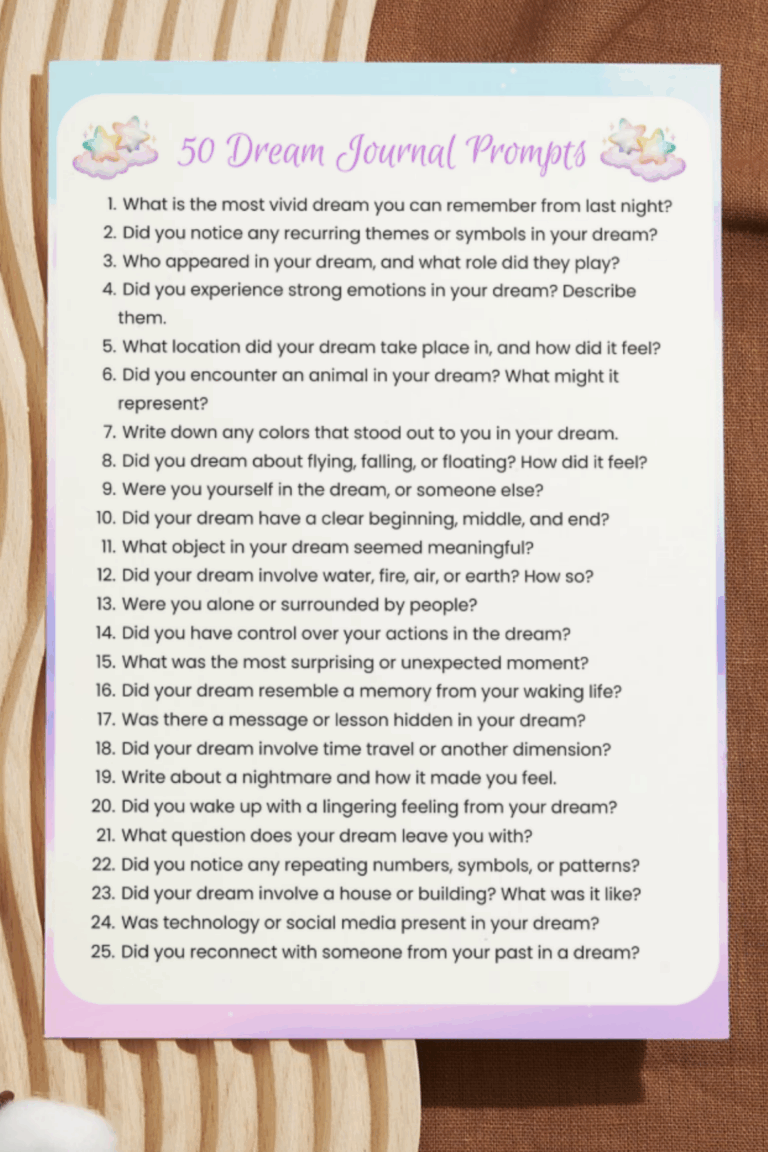




I definitely need this, I wake up tired all the time. The visualizing exercise sounds like a bit of me. Thank you for all this information. Definitely taking my sleeping habits under a loop to see what I can improve on!
Hi Fieke!
I’m so glad you found some ideas for improving your sleep. I hope you get better rest soon!
Thanks for reading!
Debbie
I feel like I could sleep for YEARSSS! Thanks for these tips Debbie!
Hi Lex!
You are so welcome! I hope these sleep meditation tips help you get some better sleep soon!
Thanks for reading!
Debbie
Great tips! Sleep meditation sounds peaceful and like a great way to help you get to sleep well.
Hi Catherine!
I’m so glad you like the sleep meditation tips! I hope they help you get a great night’s sleep soon!
Thanks for reading!
Debbie
Thanks so much for the helpful suggestions and explanations about sleep meditation! This sounds like something that could really work for me. 🙂
Thank you for this free sleep meditation guide. Getting good sleep is so important. This guide looks very helpful!
Thanks a lot for this super helpful guide on sleep meditation. It’ll be pretty helpful for people struggling with sleep-related issues to take a deep rest.
Great post Debbie! What really stood out to me was you saying it’s ok to fall asleep during meditation. I took a yoga class in college at the end of every session, we would lie down and meditate with soft music playing in background. A lot of my classmates would fall asleep during that part of class! It was so relaxing!